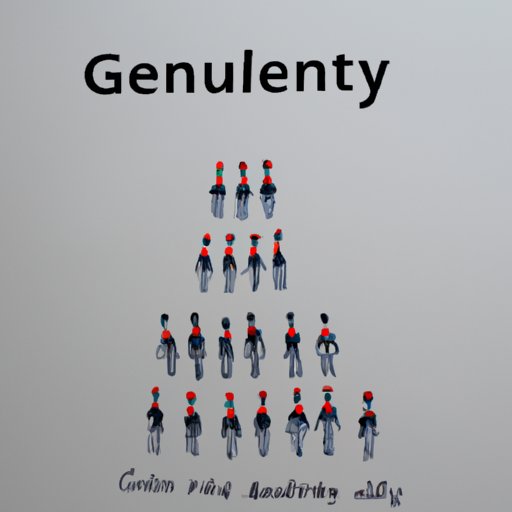Introduction
Gender is an integral part of our identity that is shaped by a variety of cultural influences. While gender roles vary across cultures, there are some common threads that can be seen in many societies. In this article, we will explore why gender varies according to culture and examine the different factors that influence gender dynamics.

Exploring the Gender Roles of Different Cultures
When it comes to gender roles, traditional societies often have clearly defined expectations for men and women. Men are typically seen as the breadwinners and protectors, while women are expected to take care of the home and family. These traditional roles have changed over time as society has become more egalitarian and gender roles have become less rigid.
In non-Western cultures, gender roles may be even more complex. For example, in some parts of Africa, gender roles are determined by one’s tribe or ethnic group. These roles can range from highly restrictive to quite liberal, depending on the particular culture. Additionally, in some cultures, third genders may be recognized, such as the hijra in India or the two-spirited people in Native American tribes.
Examining Cultural Influences on Gender
Cultural beliefs about gender play a significant role in shaping gender roles and expectations. In many cultures, masculinity and femininity are seen as two distinct categories, with certain characteristics associated with each. Religion also plays a major role in influencing gender dynamics, as certain religious beliefs can shape attitudes towards gender roles and behaviors.
Language also shapes our understanding of gender. Certain languages have gendered nouns and pronouns, which can influence how people think about gender. For example, in Spanish, all nouns have a gender (masculine or feminine), which can shape how people perceive gender roles.

Understanding the Impact of Socialization on Gender Identity
Socialization plays a crucial role in determining gender identity. Parents often have a strong influence on their children’s gender identity, as they are usually the first to introduce gender roles and expectations. Peers also play a role in shaping gender identity, as children learn how to behave and express themselves based on their peers’ behavior.
Education is another important factor in gender identity formation. Schools often teach gender roles and expectations, which can shape how students view themselves and their place in the world. Additionally, schools may enforce certain gender stereotypes and biases, which can limit students’ ability to express themselves freely.
Comparing Gender Dynamics Across Multiple Cultures
Gender dynamics vary significantly across cultures. In many societies, gender inequality is still a major issue, as women are often denied equal rights and opportunities. Economic status can also influence gender norms, as those with higher economic resources often have more access to education and other resources, which can shape their views on gender roles.
Race can also play a role in shaping gender perspectives. For example, in the United States, African Americans often face higher levels of discrimination and are more likely to be subject to negative gender stereotypes. Additionally, media representations of gender can differ significantly between cultures, as certain cultures may portray certain genders in a more positive light than others.

Analyzing How Societal Expectations Shape Gender Norms
Societal expectations play a major role in shaping gender norms. Gender stereotypes and biases can limit people’s ability to express themselves freely and may lead to discrimination or marginalization. Media representations of gender can also shape how people perceive gender roles and can perpetuate certain gender stereotypes.
Finally, politics can influence gender dynamics. Laws and policies can either promote or restrict gender equality, depending on the political environment. Additionally, politicians often use gender rhetoric to appeal to voters, which can shape public opinion on gender issues.
Conclusion
Gender is a complex concept that is shaped by a variety of cultural influences. Beliefs, religion, language, socialization, media, and politics all play a role in determining gender roles and expectations. Understanding how gender varies according to culture is essential in creating more equitable gender norms and promoting gender equality.
(Note: Is this article not meeting your expectations? Do you have knowledge or insights to share? Unlock new opportunities and expand your reach by joining our authors team. Click Registration to join us and share your expertise with our readers.)
